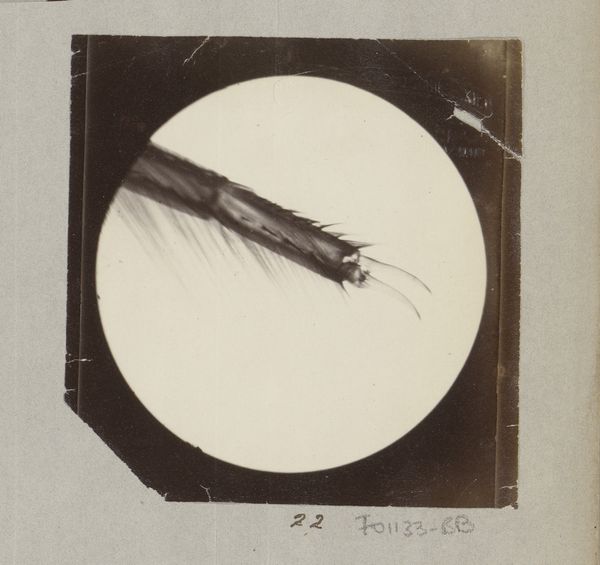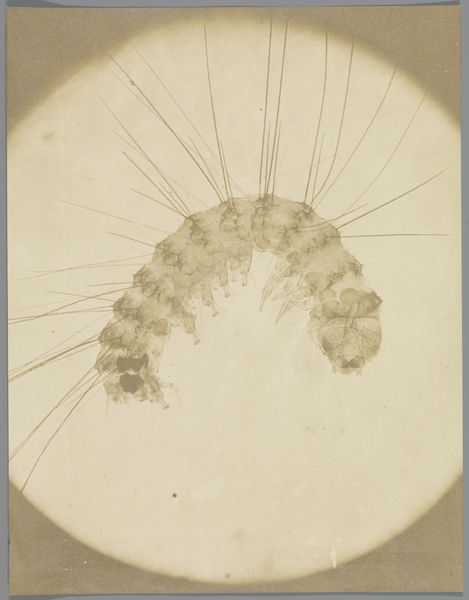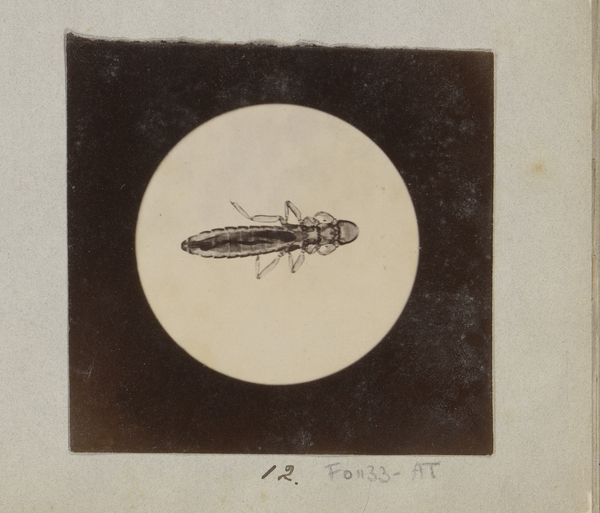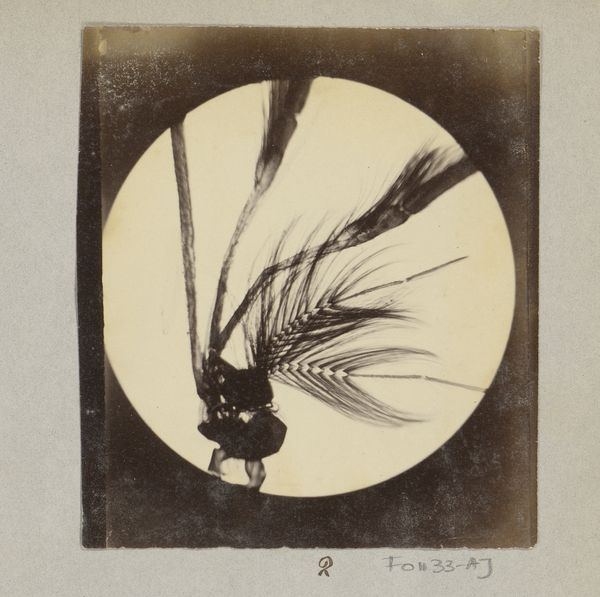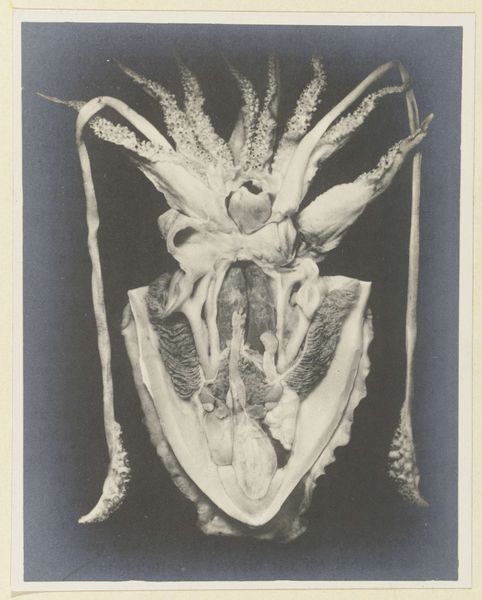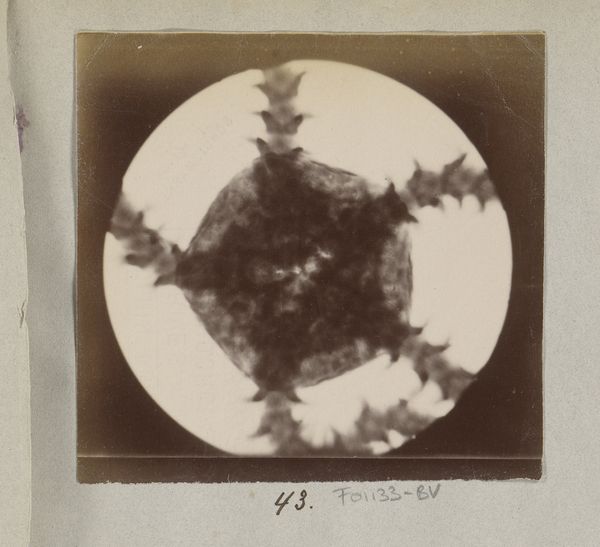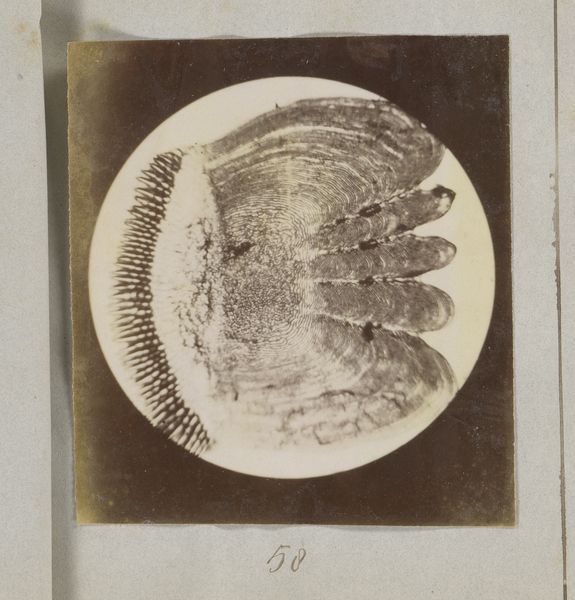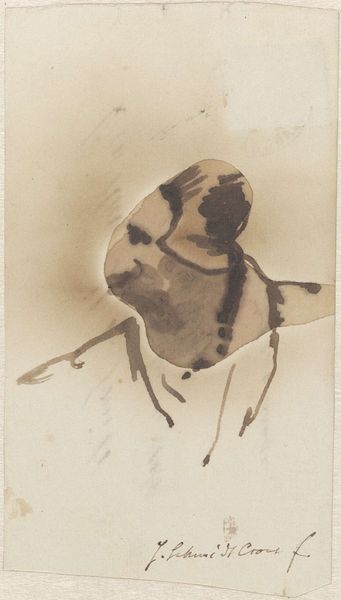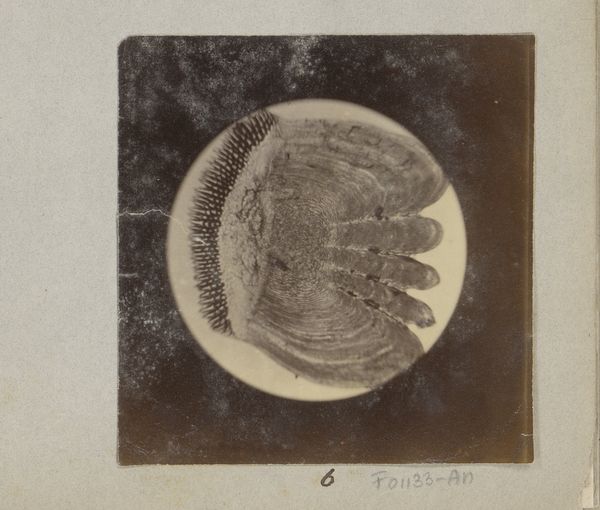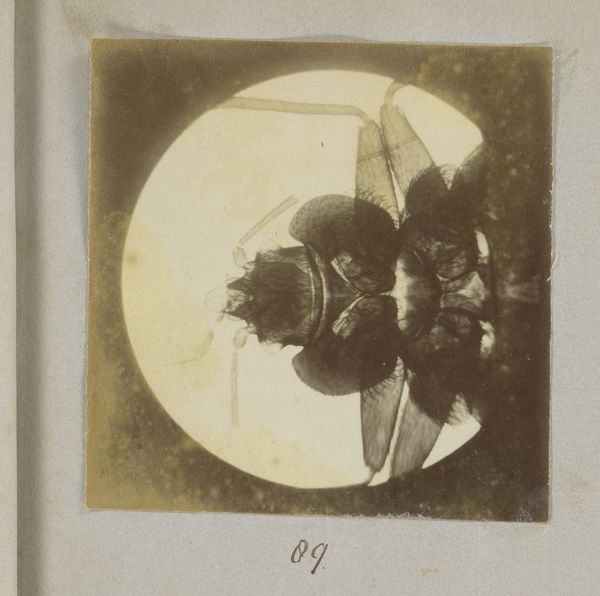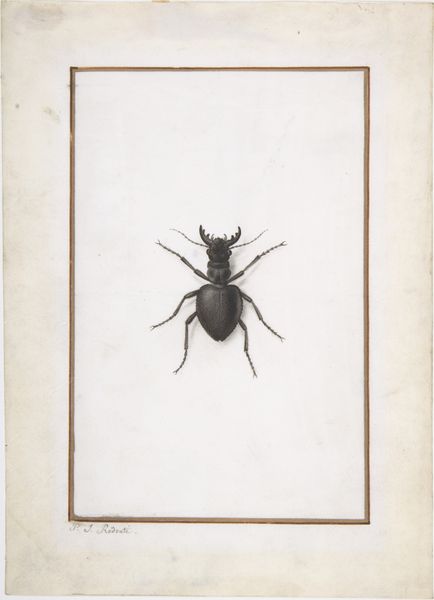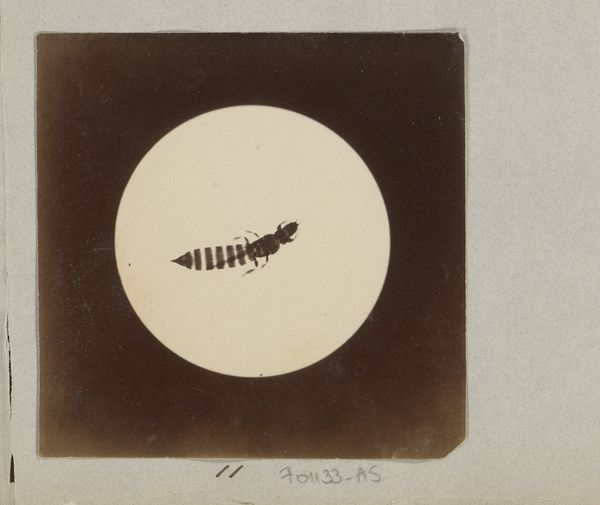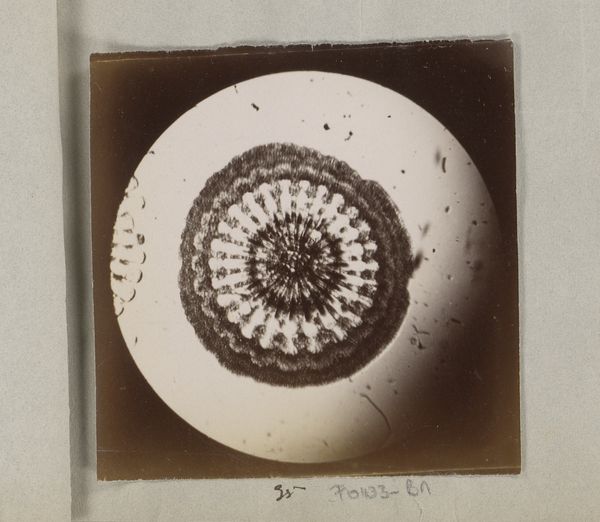
photography
#
still-life-photography
#
photography
#
modernism
#
realism
Dimensions: height 91 mm, width 94 mm
Copyright: Rijks Museum: Open Domain
Curator: Well, hello there. I can't help but shudder a little bit when I look at this image! There's something unnervingly beautiful about it. Editor: That’s quite a visceral reaction! Before we get lost in that shiver, shall I introduce it? What we're seeing is a work titled "Microscopic image of a flea, magnified 25 times," crafted around 1887-1888 by Marinus Pieter Filbri. Curator: Twenty-five times its original size! Suddenly I understand why I'm feeling itchy just looking at this photography work. There is some seriously unnerving clarity of line and form on display here, isn't there? What does this level of magnification do to how we understand it? Editor: Indeed! That clarity really collapses the distance between us and a world we often ignore or simply stomp on. Filbri presents a stark kind of naturalism, made all the more fascinating by his technological intervention. Photography, at this point, had a perceived indexical authority. By presenting a scientific image with clarity and sharp lines, he suggests objectivity and even progress, but who controls what is revealed and how? Curator: But is it progress or an unveiling of an inherent horror? The realism here isn't reassuring, it's alienating. This magnified horror! I can imagine what late Victorians would've thought. Editor: Precisely. This image participates in a late 19th-century social fascination with science and disease. Photography like this, ostensibly objective, found its way into public health campaigns, exhibitions, and educational materials. Seeing something so small made large, controllable even, maybe assuaged a bit of that fear of the invisible horrors causing epidemics at that time? Curator: You make a good point, I am intrigued. Even now, looking at this monstrous little creature against this strangely alluring, modern oval field of vision, I'm reminded how deeply interwoven our fear and curiosity can be. I mean, look how real this flea seems; one can feel the legs could jump straight from this photographic glass plate! Editor: And it also subtly comments on photography’s relationship with scientific knowledge and authority. So, next time you scratch an itch, remember Filbri’s flea—a potent symbol of both microscopic reality and macro anxieties. Curator: Yes. Both revealing and unsettling. It reminds us to look a little closer at the little things around us, whether we want to or not!
Comments
No comments
Be the first to comment and join the conversation on the ultimate creative platform.
